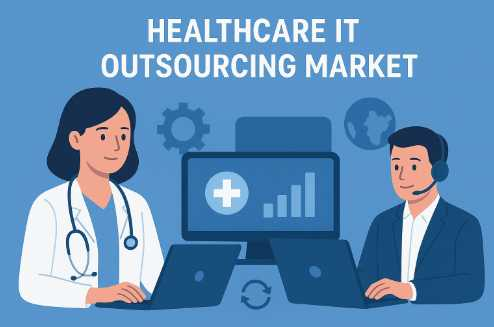
Birth injuries are devastating events that can permanently affect a child’s quality of life and place emotional and financial stress on a family. If you suspect your child’s injury resulted from medical negligence, hiring a qualified birth injury attorney is one of the most critical steps you can take. For residents in Chicago, selecting an experienced and compassionate lawyer can make a significant difference in the outcome of your case.
In this article, we’ll explore what birth injuries are, why you need a specialist attorney, what to look for when hiring one, and how to navigate this complex legal process.
Understanding Birth Injuries and Their Impact
Birth injuries can occur during pregnancy, labor, delivery, or shortly after birth. They can range from minor bruises to severe conditions such as cerebral palsy, Erb’s palsy, brain damage, or nerve injuries.
While some injuries are unavoidable, others result directly from medical errors or negligence by healthcare professionals. Improper use of forceps or vacuum extractors, failure to monitor fetal distress, or delayed cesarean sections can all contribute to preventable harm.
The effects of serious birth injuries are far-reaching. Many children require lifelong medical care, therapies, and special education services. Additionally, the emotional toll on parents and the strain on relationships can be profound. A recent study highlighted how serious injuries during birth can negatively impact a mother’s relationship with her partner and overall well-being.
Why You Need a Birth Injury Attorney
Birth injury claims are legally and medically complex. Hospitals and insurance companies have experienced legal teams dedicated to protecting their interests, so parents need an advocate who can level the playing field.
An experienced attorney will:
Investigate medical records and consult with trusted medical experts.
Identify negligence or malpractice and establish a clear link to the injury.
Calculate present and future costs associated with the injury.
Negotiate with insurance companies for a fair settlement.
Take the case to trial if necessary to fight for maximum compensation.
Qualities to Look for in a Chicago Birth Injury Lawyer
Not every personal injury lawyer has the depth of experience needed for birth injury cases. When searching for legal representation, consider the following qualities:
1. Specialization and Experience
Look for a lawyer who focuses specifically on birth injuries and medical malpractice. They should have a proven track record of handling similar cases and securing favorable verdicts and settlements.
For example, Robert Goldwater is a well-known attorney with extensive experience in representing families in birth injury cases.
2. Strong Network of Medical Experts
Successful cases often hinge on expert testimony. Your attorney should have access to respected doctors and specialists who can review medical records and provide credible opinions to support your claim.
3. Transparent Communication
Birth injury claims can take time, and you’ll need clear updates along the way. Choose an attorney who communicates openly, explains complex legal terms, and promptly answers your questions.
4. Compassion and Understanding
A birth injury case is deeply personal. You want a lawyer who demonstrates genuine empathy, listens to your story, and treats your family with respect and care.
5. No Upfront Costs
Most reputable birth injury attorneys work on a contingency fee basis, meaning they only get paid if they win your case. This structure ensures they are motivated to fight for the best possible outcome.
Steps to Take When Choosing an Attorney
Finding the right lawyer can feel overwhelming. Here are some practical steps to help you make an informed decision:
Do Your Research
Start by reading online reviews, checking credentials, and reviewing past case results. Use legal directories, such as Justia and Avvo, to find lawyers with high ratings in medical malpractice and birth injury cases.
Schedule Consultations
Most attorneys offer free initial consultations. Take advantage of this to meet potential lawyers, discuss your situation, and ask detailed questions about their experience and approach.
Ask the Right Questions
Some questions to consider during your consultation include:
How many birth injury cases have you handled?
What were the outcomes of those cases?
How do you involve medical experts?
Will you personally handle my case or pass it to another attorney?
What are the potential costs if the case is unsuccessful?
Trust Your Instincts
Legal expertise is crucial, but trust and comfort are equally important. Choose a lawyer you feel confident will handle your case with the dedication and sensitivity it deserves.
What to Expect During the Legal Process
Understanding the typical process can reduce anxiety and help you prepare:
Initial Investigation
Your attorney will gather medical records, interview witnesses, and consult with medical professionals to determine whether negligence occurred.
Filing the Claim
Once there’s sufficient evidence, your lawyer will file a formal complaint against the responsible parties, which may include doctors, nurses, or the hospital.
Discovery and Negotiations
Both sides exchange information and evidence. Many birth injury cases settle out of court, but if a fair settlement cannot be reached, your attorney will prepare for trial.
Trial and Verdict
If your case goes to trial, your lawyer will present your case before a judge or jury, including expert testimony and evidence supporting your claim for damages.
Types of Compensation Available
Successful birth injury lawsuits can help cover the wide range of expenses and losses families face, including:
Medical bills (past, present, and future)
Rehabilitation and therapy costs
Special education expenses
Loss of future earnings
Pain and suffering
Emotional distress
These funds provide vital support to help you care for your child and ensure they have the best possible quality of life.
Take Action Today
The statute of limitations for medical malpractice claims in Illinois can be complex, with strict deadlines that vary depending on the circumstances. It’s crucial to act quickly to preserve your rights and build a strong case.
Hiring a knowledgeable birth injury lawyer in Chicago can make all the difference in securing justice and financial security for your child and family.
Final Thoughts
Facing the reality of a birth injury is heartbreaking, but you don’t have to navigate this journey alone. An experienced Chicago birth injury attorney can fight for your rights, hold negligent parties accountable, and help secure the resources your child needs for a better future.
Do your research, ask questions, and choose an attorney who understands the unique challenges of birth injury cases and is committed to supporting your family every step of the way.

















